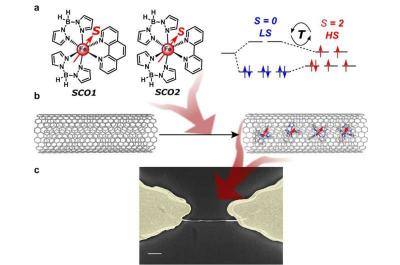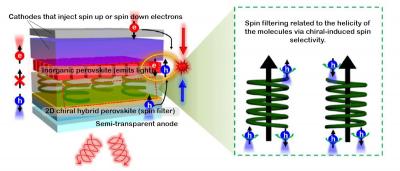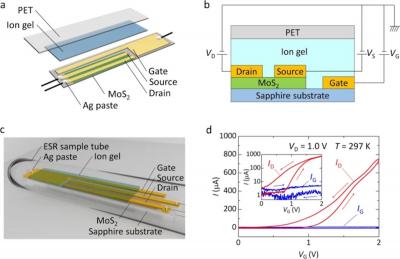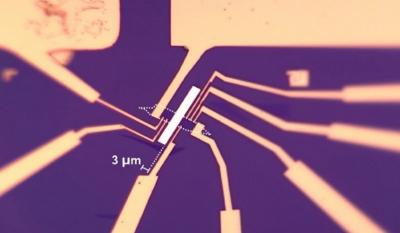Researchers use unique material to control spin polarization
Researchers used the Advanced Photon Source (APS), a U.S. Department of Energy Office of Science User Facility at DOEâs Argonne National Laboratory, to study ways to manipulate electron spins and develop new materials for spintronics. The research team, led by Chang-Beom Eom at the University of Wisconsin-Madison, designed a new material that has three times the storage density and uses much less power than other spintronics devices.
Not many of these types of materials exist, especially ones that work at room temperature like this one. If the new material can be perfected, it could aid in the creation of more efficient electronic devices with less tendency to overheat. This is particularly important for advancing the development of low-power computing and fast magnetic memory.



 The image shows eight electrodes around a 20-nanometer-thick magnet (white rectangle) and graphene (white dotted line). Credit: University at Buffalo.
The image shows eight electrodes around a 20-nanometer-thick magnet (white rectangle) and graphene (white dotted line). Credit: University at Buffalo.